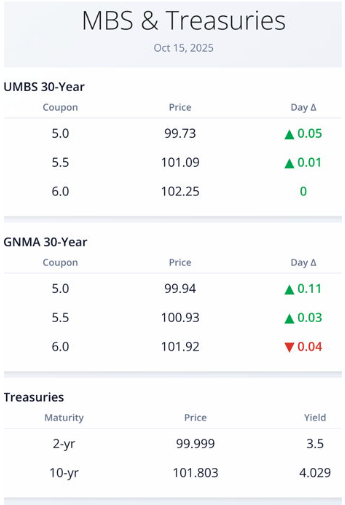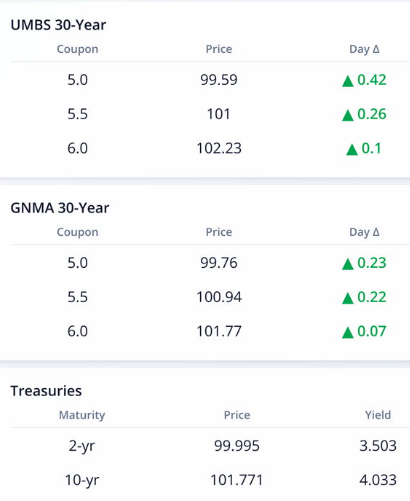WTMS Blog Today = What’s up in Mortgage Today (AM) – 8/6/2025
The mortgage-backed securities market is experiencing continued selling pressure today, with bonds facing downward momentum that has persisted for multiple trading sessions without clear fundamental drivers. The 10-year Treasury yield opened at 4.216% and has been trading in a range between 4.212% and 4.243%, showing modest volatility as bond prices declined by 0.14% from yesterday’s close. This selling pressure in the broader bond market is creating headwinds for mortgage-backed securities, particularly UMBS (Uniform Mortgage-Backed Securities) which remain under pressure alongside Treasury movements. Market analysts note that the recent bond selloff appears to be technical in nature rather than driven by specific economic data or Federal Reserve communications. The MBS Highway National Housing Index for December 2024 showed a modest 1-point month-over-month increase to 32, indicating some stability in housing market sentiment despite the challenging rate environment. Treasury bond pricing weakness is translating directly into higher mortgage rates, as the typical spread relationship between MBS and Treasuries remains intact.
GNMA securities are following similar patterns to UMBS, with both government-backed mortgage securities facing pressure from the broader fixed-income selloff. The lack of obvious fundamental catalysts for the bond market weakness suggests that year-end positioning and technical factors may be driving current price action. Mortgage originators are closely monitoring these developments as any sustained increase in rates could further impact refinancing activity and purchase applications heading into 2025. The current environment reflects the ongoing challenges facing the mortgage market as higher rates continue to constrain both borrower demand and originator volumes. Market participants are watching for any signs of stabilization in bond prices that could provide relief for mortgage rates, though the technical nature of recent selling suggests volatility may persist through year-end trading.


